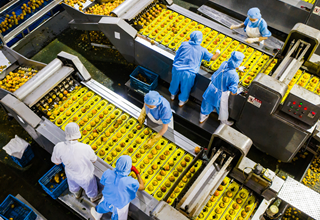Growing plants: The natural evolution of petrochemical centers
Deer, peacocks and ostriches bask in the warmth of the sun and wander outside their wooden houses, against the backdrop of a surrounding rockery, fishing pond and large green vegetation.
At first glance, one might be tempted to think it is a park, but it is actually a petrochemical plant of Sinopec Group, the country's leading petroleum refiner and oil products producer, which is operating on the site in northern China's Tianjin municipality.
Hundreds of pipelines are set up to connect various towers and refining equipment, which are busy producing oil and chemical products.
"We did follow the extensive growth model before," says Tong Wei, head of the production department of the group's petrochemical plant in Tianjin.
The company, however, gradually shifted to an intensive one and stuck to building an ecological plant with the state-of-art technology.
In 2000, the plant welcomed a herd of deer as new family members, but more importantly to serve as the "environmental monitors".
"At the very beginning, we were worried that they would not adapt, since they are more sensitive to the living environment," Tong says, adding that the workers recorded data every day and paid a lot of attention to controlling the emission of wastewater and gas.
Day in and day out, the deer grew healthily under the care of the staff, who say they feel like they are working in an ecological park rather than a petrochemical plant, and have become accustomed to working alongside the animals.
To better monitor the environment, the plant also launched an intelligent "environment map" to release real-time data, save historical data and analyze development trends of its water emissions, as well as the volume, color and concentration of gas.
Dong Feng, director of a workshop in the refining department, says frequent checks were required for monitoring the environment in the past, but the current real-time monitoring can be realized by a smartphone, greatly reducing the front-line work intensity and improving management efficiency.
This garden-like petrochemical plant stands in contrast to people's memories of the roaring machinery and wastewater-and gas-producing sites of the past, and it has attracted nearly 70 social groups and over 5,000 visitors in the last two years.
What is occurring in Tianjin mirrors the ecological transformation of other petrochemical companies across China.
The Sinopec Beijing Yanshan Petrochemical Co Ltd, located in Fangshan district, created a wetland park inside its plant. The wetland water consisted of the plant's reclaimed industrial wastewater and recycled domestic sewage from surrounding residencies, and it has since become a scenic spot.
Jiujiang Petrochemical Company in East China's Jiangxi province also built an artificial pool as a way to monitor the quality of treated industrial sewage. Flowers and fish can be nurtured in the pool, says a local employee.
Zhang Minhua, a professor at the School of Chemical Engineering and Technology in Tianjin University, says that ecological transformation, technology innovation and intelligent monitoring will be future trends followed by petrochemical plants, which will show the transformation and upgrading of traditional Chinese enterprises.

Copyright © Tianjin Municipal Government.
All rights reserved. Presented by China Daily.
京ICP备13028878号-35



